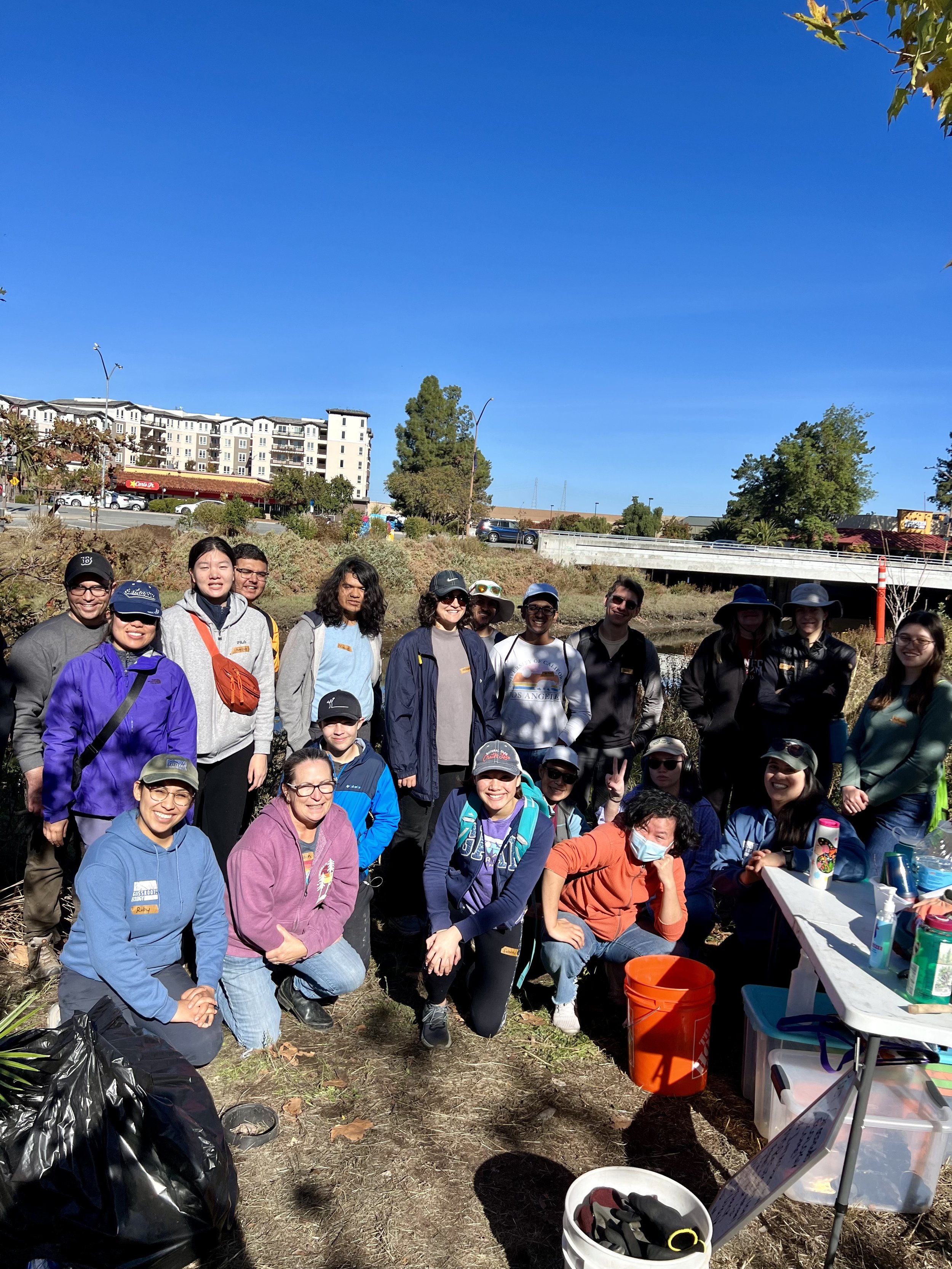Our Favorite Bay Area Wildflower Hikes
You won’t be surprised to learn that Grassroots Ecology staff members love California wildflowers! We steward open spaces in the San Francisco Bay Area that host a diversity of native wildflowers, and we want to share the wildflower love by telling you about some of our favorite wildflower hikes and viewing opportunities where we work.
Partnerships in Conservation: POST and Grassroots Ecology
Grassroots Ecology cares for thousands of acres of land from the Santa Cruz Mountains to the San Francisco Bay, but we couldn't do it without those who protect this region from development. Peninsula Open Space Trust (POST) is doing exactly that – creating a network of protected lands where people and nature connect and thrive.
Growing with Grassroots Ecology: Akira’s Story
Our Intern Akira’s journey with Grassroots Ecology began in his early teens. Learn more about what kept him coming back over the last 6 years: as a Youth Steward in high school, a Naturalist Intern last summer, and as a current Habitat Restoration Intern.
Reducing Wildfire Risk with San Jose Conservation Corps and Charter School
Grassroots Ecology has worked with the San Jose Conservation Corps and Charter School since 2017 to tackle large restoration projects. Thanks to the Corps, we have made huge strides in wildfire resiliency, urban greening, and education at local parks and preserves.
From Hazard to Habitat: Making the Most of One Campus’ Creek
For years, the creek flowing through Redwood High has not provided much for the school or the ecosystem, in part due to the invasive eucalyptus trees lining the top of the creek bank. Grassroots Ecology set out to help Redwood High with its eucalyptus problem, while also connecting students with nature.
Bayside Buzz: New Garden Sites by the Bay
Two of our newest bay restoration projects benefit pollinators like bees, butterflies, moths, flies, and wasps. Read about our new pollinator gardens along the bay—one in Sunnyvale, the other in Menlo Park—and how you can get involved.
Stickers for Stewards: Collect Them All!
Volunteer with Grassroots Ecology to receive one of our new habitat stickers! Our 8 new stickers represent some of the irreplaceable ecosystems we are all working together to restore.
Turning Your Ideas into Action
Back in 2023, we shared how your feedback helped us make changes to our volunteer events to create an even more gratifying experience for all participants. But the process didn’t end there; we are continually listening to and learning from your input.
Increasing Access to Nature Experiences
Over the past year, we have been working to develop our next strategic plan, thinking carefully about where we need to focus to bring our vision of healthy ecosystems and engaged communities that much closer.
Grassroots Ecology starts tidal marsh restoration in Shoreline at Mountain View!
With support from the City of Mountain View, in 2023 Grassroots Ecology was awarded a four-year Valley Water, “Safe, Clean Water and Natural Protection Program” grant for the Mountain View Tidal Marsh Restoration Project!
Fostering a Deeper Impact in Redwood City
Our new project sites in Redwood City aim to increase native plant habitat along urban creek corridors.
Native Plant of the Month: Sticky Monkey Flower
The monkeyflowers are a diverse assemblage of plants, with flower colors ranging from golden yellow and pinkish purple to pale orange and bright red. Their ecological roles are equally varied, with each species having unique habitat preferences and pollinator interactions.
Rooted in our Community
Perhaps you've heard it at a workday, or maybe it was through an email you received after your volunteer event. Regardless, we hope it rings true: Grassroots Ecology values your feedback.
Our Steward Natalie's Story
Before Grassroots Ecology, I was a newly educated AP Environmental Science student who wanted to help the earth, but one who didn’t know where to start. I found out about the organization through a Cupertino newsletter advertising about Grove Guardians, a summer stewardship program for teenagers. After my first summer morning at Redwood Grove, I knew this is what I was looking for: an interactive experience with nature that furthered my education.
Flight of the Bumble Bee, Plight of the Native Bee
Bees invoke a broad spectrum of feelings: horror, fear, awe, adoration, or perhaps a combination of these. Yet, what if I told you most of these feelings are elicited by one species of bee out of roughly 400 different bee species in the Bay Area and about 1,600 in the state of California?
Rain!
Somehow it feels predictable that after years of drought, we are now facing flooding, mudslides, and damage to dams and levees from the heavy rains this season. California doesn’t have many “average” winters.
Locally, we have been asked pretty frequently how our project sites are doing with all of this rain. The answer varies a bit from site to site.
Our Palo Alto Creek Monitoring Program Celebrates its Third Birthday
“And now, the moment of truth… Will we see water at Terman today?!” How frequently this question has crossed my mind in the past three years as we prepared to visit Adobe Creek at Terman Middle School in Palo Alto, one of our most notoriously dry locations for water quality monitoring. Ever since we began our Palo Alto water quality monitoring program in December of 2013--right in the middle of the drought-ridden, sun-soaked winter--we have played this guessing game.


















